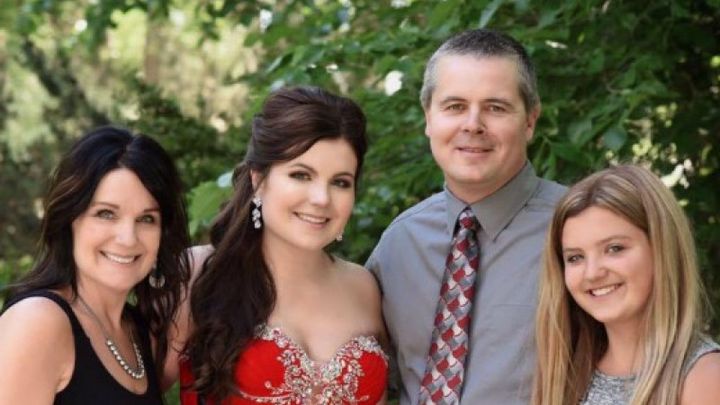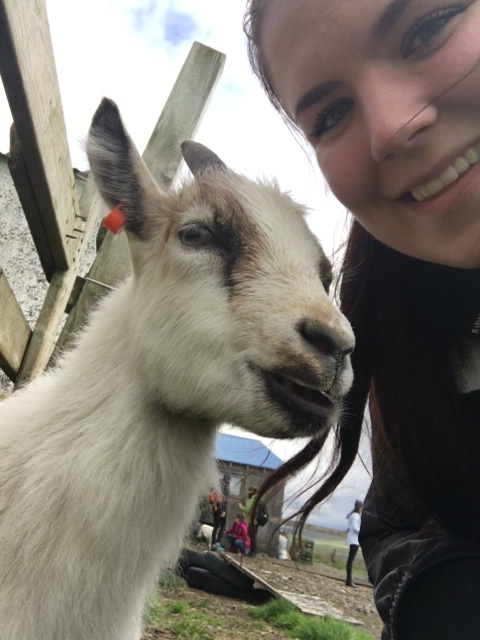
Taryn's Hope for Sight

I will never forget Tuesday, June 13th, when I received a phone call from my 19-year-old daughter, Taryn. She had gone for a routine optometrist appointment that day and was so excited to buy a pair of glasses. She noticed her eyes were bothering her for some time, but she thought that a prescription pair of glasses would be the solution. However, that afternoon, our hearts were broken. My husband, Kelly, and I were called into our family’s optometrist office after hours that evening. He explained to our family that Taryn’s cells behind her retinas, in both eyes, are dying off at a rapid rate. Unfortunately, these cells do not regenerate. He informed us that of the 14,000 patients he has seen in his career, he has never seen a case like this. Two years ago, in June of 2015, her vision was 20/20 in both eyes. Today, her left eye is 20/50 and her right eye is 20/80. This means that what most people see at 80 feet, Taryn can see at 20. The driving standard is 20/50. He told us Taryn will lose her central vision in both eyes, that her life will change dramatically, and she should seek counselling. He had made an urgent request for Taryn to see a retina specialist in Saskatoon, the following day.
After many eye tests the specialist has diagnosed Taryn with Stargardt disease. Stargardt disease is a form of inherited juvenile macular degeneration. As a retina specialist, he sees one case a year. The progressive vision loss associated with Stargardt disease is caused by the death of photoreceptor cells in the central portion of the retina, called the macula. He explained that Kelly and I both likely carry a recessive mutated gene, even though neither of us have the disease. He also mentioned that our 13-year-old daughter, Kennedi, has a 25% chance of also having Stargardts. The following week, on June 21st, we were given Kennedi’s diagnosis. Once again, we felt our our hearts were even more broken. Kennedi is not showing any signs of vision loss, but he is 95% certain Kennedi also has Startgardt disease, as her retina scans were consistent with Taryn’s but in the very early stage. The girls have both been to Royal University Hospital to start the genetic testing process and Kelly and I will be going in at a later date. Both physicians told us that there was no known cure or treatment in Canada.
For those of you who know Taryn, she is one of the gentlest, caring, hard-working individuals who has so much determination. She is currently enrolled in her second year of university at the Edwards School of Business at the University of Saskatchewan, where she will major in Human Resource Management. Taryn just returned home from Iceland on July 30th, where she was studying abroad for four weeks taking a Leadership and Sustainability course. The evening she returned home, she went for a drive in her car. Unfortunately, Taryn made the decision that evening that she will no longer be driving as she no longer feels confident.
As a family, we made the decision that Taryn will receive stem cell therapy at the Beike Biotechnology Hospital in Bangkok, Thailand this fall where she was accepted as a patient. The treatment is not performed in Canada or covered by provincial healthcare. Beike Biotechnology Hospital is one of the world’s largest stem cell facilities and leaders in stem cell research. We are hopeful that stem cell treatment will restore some of her lost vision, or at least stop the progression completely. The cost of the procedure is $37,500 CDN. It is a very costly procedure, but how can one put a price on their child’s vision?
We decided to reach out to family, friends, and community members. Thank you for taking the time to ready our story. From the bottom of our hearts, thank-you.

Organizer
Tricia Leason
Organizer
Martensville, SK